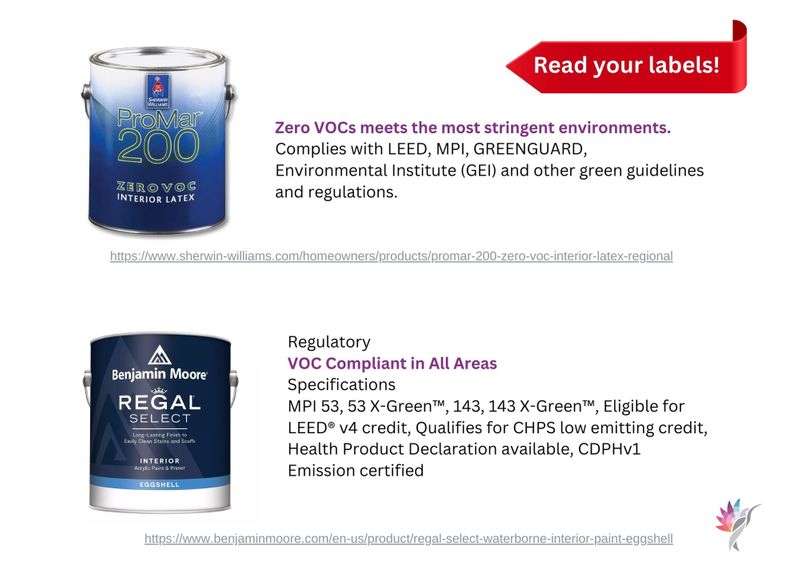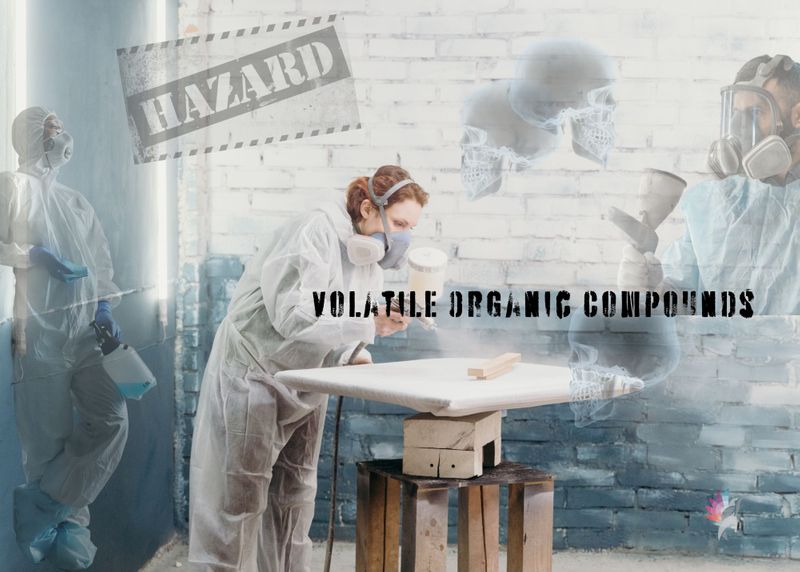Every time I mention the acronym, VOC to a client, I am surprised by how many are not familiar with the acronym of VOC. Especially because the focus on our health has become so important and we are inundated with info bombarding us from all directions regarding toxic elements that invade our lives!
VOC stands for Volatile Organic Compounds. In the context of paint, VOC’s are chemicals that can vaporize and be released into the air as the paint dries. These compounds can have both short-term and long-term effects on indoor air quality and human health.
It’s important to note that not all VOC’s are harmful, but some can contribute to air pollution and have negative impacts on the environment and human well-being.
Pros of Using Low VOC or VOC-Free Paint:
Improved Indoor Air Quality: Low VOC or VOC-free paints emit fewer harmful chemicals into the air, which can lead to better indoor air quality. This is especially important for spaces where people spend a significant amount of time, such as homes and offices.
Reduced Health Risks: Using paints with lower VOC content can help reduce the risk of health issues such as respiratory problems, headaches, and allergies that can be triggered or exacerbated by exposure to high levels of VOCs.
Environmental Benefits: Paints with lower VOC content contribute less to outdoor air pollution and smog formation. By using these paints, you’re helping to minimize your carbon footprint and support environmental sustainability.
Less Odor: Low VOC paints often have a milder and less lingering odor, making the painting process more comfortable and convenient for occupants.

Ingredients Causing Toxicity:
The toxicity of paint is primarily attributed to certain chemicals that are commonly used in paint formulations. Some of the key culprits include:
Solvents: These are liquids used to dissolve or disperse other components in the paint. Solvents often contain VOCs, which can evaporate and contribute to indoor air pollution. Common solvent-based VOCs include benzene, toluene, and xylene.
Binders and Resins: These components help paint adhere to surfaces and contribute to its durability. Some resins used in traditional paints can contain VOCs that are released during the drying process.
Pigments: While pigments themselves are not necessarily toxic, certain pigments might be associated with higher VOC levels, depending on the manufacturing processes used.
Additives: Paints may contain additives for various purposes, such as drying time, texture, or durability. Some additives can also contribute to VOC emissions.
What do they use in Low or No VOC paint to avoid those chemical culprits?
Water-Based Formulas: Many low VOC and VOC-free paints use water as a primary solvent instead of traditional solvents that contain harmful VOCs. Water-based paints have significantly lower VOC emissions and are considered much safer for indoor air quality.
Natural Binders and Resins: Instead of using synthetic binders and resins that can contain VOCs, manufacturers often opt for natural alternatives like plant-based resins, cellulose, or clay. These alternatives provide good adhesion and durability without the harmful emissions.
Minimized or Alternative Pigments: While pigments themselves aren’t necessarily toxic, certain manufacturing processes for creating pigments can lead to higher VOC content. Some low VOC paint manufacturers opt for pigments that are produced using environmentally friendly methods or reduce the overall pigment load in their formulas.
Low VOC Additives: Additives used in low VOC paints are carefully selected to have minimal impact on indoor air quality. These additives might include thickeners, stabilizers, and preservatives that have low or no VOC content.
Natural and Safe Solvents: Some low VOC paints still use solvents but choose ones that have low toxicity and low vapor pressure, which means they emit fewer fumes. These solvents are often derived from renewable resources and are less harmful to both indoor air quality and the environment.
Advanced Formulation Techniques: Manufacturers of low VOC paints utilize advanced technology and formulation techniques to reduce overall chemical emissions. This might include encapsulating VOCs within the paint to prevent them from evaporating into the air.

It’s important to note that the specific formulation of low VOC paints can vary from brand to brand.
As a result, you may want to check the label or product specifications to see which ingredients have been substituted or reduced in order to achieve a lower VOC content.





